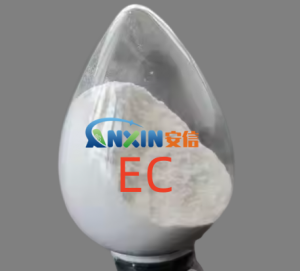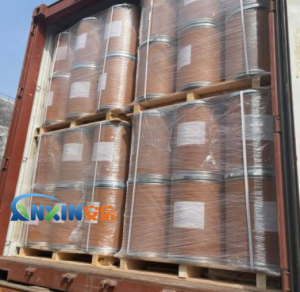Ethyl cellulose (EC) is a nonionic cellulose ether derived from natural cellulose through an ethylation reaction. Due to its excellent film-forming properties, thermal stability, and chemical inertness, it is widely used in coatings, inks, pharmaceuticals, electronic materials, and other industries. However, traditional ethyl cellulose dissolved in organic solvents presents issues such as flammability, environmental concerns, and high operating costs. To address these issues, aqueous ethyl cellulose dispersions (AECDs) were developed.
1. Definition and Characteristics of Aqueous Ethyl Cellulose Dispersions
Aqueous ethyl cellulose dispersions are materials that form a stable dispersion in water using emulsification, dispersion, or modification techniques. Their key features include:
Water-based and environmentally friendly: They avoid the use of traditional organic solvents, meeting the requirements of modern environmentally friendly coatings and green chemical industries.
High stability: The ethyl cellulose particles in the dispersion are uniformly dispersed in the aqueous phase, exhibiting excellent storage stability and resisting sedimentation or aggregation.
Controllable Viscosity: By adjusting the degree of substitution, molecular weight, and dispersant formulation of ethyl cellulose, aqueous dispersions with varying viscosities can be obtained to meet diverse process requirements.
Excellent Film-Forming Properties: After water evaporation during the drying process, ethyl cellulose forms a uniform, continuous film with excellent mechanical strength and chemical stability.
Strong Compatibility: It can be mixed with a variety of additives, resins, pigments, and fillers, making it widely suitable for use in paints, inks, and functional coatings.
2. Preparation Methods
2.1. Emulsion Dispersion Method
Ethyl cellulose is dissolved in an organic solvent and then, using an emulsifier and high-speed stirring, forms an emulsion dispersion in water. The organic solvent is then removed to obtain an aqueous ethyl cellulose dispersion. This method produces a dispersion with small particle size and excellent stability.
2.2. Mechanical Dispersion Method
Ethyl cellulose powder is directly dispersed in an aqueous phase through high-speed shearing or grinding. A dispersant or thickener is then added to stabilize the system. This method is suitable for the preparation of low-viscosity aqueous dispersions.
2.3. Chemical Modification Method
Ethyl cellulose is chemically modified through partial carboxylation or hydroxylation to impart hydrophilic groups on its surface, allowing it to naturally form a stable dispersion in water. This method is often used in functional coatings or pharmaceutical formulations.
3. Applications of Ethyl Cellulose Aqueous Dispersions
3.1. Water-Based Coatings
As thickeners, film-forming aids, or binders, ethyl cellulose aqueous dispersions can improve coating smoothness, adhesion, and abrasion resistance while reducing the use of organic solvents and enhancing environmental performance.
3.2. Water-Based Inks
In printing inks, ethyl cellulose aqueous dispersions can improve leveling and color uniformity, while also improving drying speed and water resistance. They are suitable for packaging printing, flexographic printing, and other applications.
3.3. Pharmaceuticals and Food
As drug-controlled-release membranes or food coatings, aqueous ethyl cellulose dispersions avoid the safety risks of residual organic solvents while enabling controlled drug release rates.
3.4. Electronic Materials and Functional Coatings
In electronic packaging materials and functional films, ethyl cellulose aqueous dispersions can serve as film-forming matrices, providing excellent mechanical properties and thermal stability. They are also easily composited with nanomaterials to produce transparent or conductive films.
4. Precautions and Development Trends
Stability Control: Aqueous dispersions are susceptible to temperature, pH, and electrolytes. Therefore, appropriate dispersants and storage conditions should be selected based on the specific application.
Drying Film-Forming Performance: Excessive evaporation of water may cause cracking in the coating. Coating quality should be improved through additives or process optimization.
Green and High-Performance: In the future, ethyl cellulose aqueous dispersions will develop towards high solids content, low VOCs, and functionalization (such as fire retardancy, water resistance, and electrical conductivity) to meet higher-end industrial and medical needs.
Ethyl cellulos aqueous dispersions are environmentally friendly, high-performance water-based materials that combine the excellent film-forming properties of ethyl cellulose with the green advantages of water-based systems. They are not only useful in traditional industries such as coatings, inks, and pharmaceuticals, but also show potential in emerging fields such as electronics and functional coatings. With the popularization of green chemical concepts and the advancement of water-based material technology, ethyl cellulose aqueous dispersion will become an important development direction in the future materials field.
Post time: Sep-06-2025

